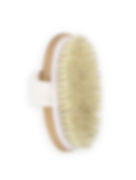Lymphatics
The lymphatic system is a vital part of the immune system. It includes organs such as the thymus, bone marrow, spleen, tonsils, appendix, and Peyer patches in the small intestine that produce and process specialized white blood cells that fight infection and cancer.
Like the venous system, the lymphatic system transports fluids throughout the body. The lymphatic system consists of
-
Thin-walled lymphatic vessels
-
Lymph nodes
-
Two collecting ducts
Lymphatic vessels, located throughout the body, are larger than capillaries (the smallest blood vessels, which connect arteries and veins), and most are smaller than the smallest veins. Most of the lymphatic vessels have valves like those in veins to keep the lymph, which can clot, flowing in the one direction (toward the heart). Lymphatic vessels drain fluid called lymph from tissues throughout the body and return the fluid to the venous system through two collecting ducts.
Lymph begins as fluid that has diffused through the very thin walls of capillaries into the space between cells. Most of the fluid is reabsorbed into the capillaries and the rest is drained into the lymphatic vessels, which eventually return it to the veins. Lymph also contains many other substances including
-
Proteins, minerals, nutrients, and other substances, which provide nourishment to tissues
-
Damaged cells, cancer cells, and foreign particles (such as bacteria and viruses) that may have entered the tissue fluids
Lymph nodes are tiny bean-shaped organs that serve as collection centers for lymph. All lymph passes through strategically placed lymph nodes, which filter damaged cells, cancer cells, and foreign particles out of the lymph. Lymph nodes also contain specialized white blood cells (for example, lymphocytes and macrophages) designed to engulf and destroy damaged cells, cancer cells, infectious organisms, and foreign particles. Thus, important functions of the lymphatic system are to remove damaged cells from the body and to provide protection against the spread of infection and cancer. Some lymph nodes are clustered under the skin, particularly in the neck, armpits, and groin. Other lymph nodes are deep within the body, for example inside the abdomen.
The lymphatic vessels drain into collecting ducts, which empty their contents into the two subclavian veins, located under the collarbones. These veins join to form the superior vena cava, the large vein that drains blood from the upper body into the heart.

Your body is
an incredible,
self healing vessel
Blood enters the capillaries from an arteriole (red) and leaves through venules (blue). Interstitial fluids may drain into the lymph capillaries (green) and proceed to lymph nodes.
Getting rid of rubbish always helps us to feel lighter and unencumbered,
and it's just the same within
our bodies

Dry skin brushing stimulates the lymphatic system and improves circulation of lymphatic fluid throughout the body which
may help improve a variety of health concerns.
Of all the things we’re told about our bodies, our Lymphatic System is barely ever mentioned, but it is one of the most important and biggest systems keeping us healthy! While the heart continuously pumps blood through the blood vessels, the lymphatic system relies on the movement of smooth muscles to transport fluid through the lymph vessels. It is a sensible decision to support our lymphatic system, especially these days when we wear bras regularly and don't get to run topless chasing dinosaurs! We are also exposed to countless toxins and stresses that play havoc on our hormonal and immune systems and this in turn is all filtered through the lymph system.
At Natural Breast Care we get lots of feedback from women who have experienced breast issues like discomfort, PMT tenderness, bumps, lumps or cysts who claim that the symptoms clear up with regular use of the Breast Care Routine ~ which is dry skin brushing and massaging with the balm, as well as self love and mindfulness. Of course this makes sense as the dry skin brushing and massage play a huge role in moving on the stagnated, build up of waste in the lymph system. We say rather than waiting for discomfort to arise, take the health of your breasts into your own hands and practice regular dry skin brushing and massage to keep things moving in the first place.
Our Top Four Tips For A Healthy Lymphatic System

Drink plenty of clean water – Dehydration is one of the most common causes of lymphatic congestion which can further exacerbate existing lymph problems. Drinking sufficient water throughout the day encourages healthy lymphatic function and reduces water retention. We highly encourage you to research and invest in a top quality water filter and only drink the purest, mineralised water possible.

Movement – While the human heart is responsible for pumping fresh blood around the body, the lymphatic system relies on movement of smooth muscle tissue to carry fluid toward lymph nodes. Engaging in different forms of exercise can promote healthy lymphatic activity – whether that’s a run, walk or regularly standing up and stretching throughout the day!

Nutrient-rich diet – Prioritising a diet rich in fresh fruit and vegetables and limiting processed foods and beverages can improve overall health by supporting healthy detoxification, boosting the immune system and promoting optimal lymph function. We also have lots of other dietary tips, specific to breast health, for you here.

Manual lymphatic drainage techniques involve gentle, slow and rhythmic movements applied to the skin near the armpits, breasts, neck, arms, legs and feet to stimulate the lymphatic system and increase healthy lymph circulation. The Breast Care Routine gives guidance on a few of these techniques with the dry skin brushing and massage steps detailed for you to follow along with at home.













